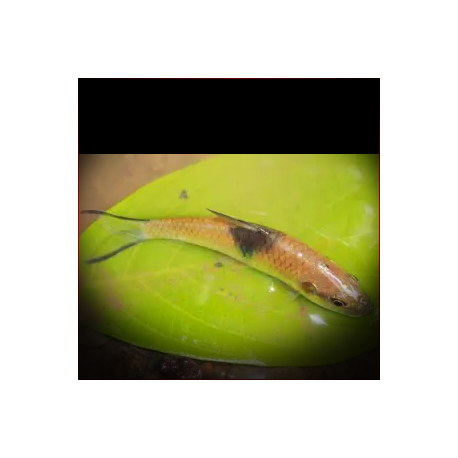More info
Datasheet
| Maximum Size | 41.0cm / 16.14inches |
General Description
The Hampala Sabana, also known as Garras Crossocheilus Tanichthys, is part of the Cypriniformes order and belongs to the Cyprinidae family. This species is primarily found in the Malaysian state of Sabah in northern Borneo. It is distinguished by its color patterns, with dark vertical bands, black marginal stripes in the caudal fin lobes, and various body markings that can help differentiate it from other species within the genus Hampala.
Aquarium Setup
Creating a suitable habitat for the Hampala Sabana in an aquarium involves replicating its natural riverine environment. It prefers well-oxygenated, clear, running waters with substrates like sand, gravel, rock, or mud. Lush vegetation and ample swimming space are beneficial. For specific details on the ideal setup, refer to the table provided.
Behaviour
In its natural habitat, the Hampala Sabana is often found in deeper, slower-moving stretches of rivers. It displays behaviors typical of cyprinids, showing a preference for swimming in schools and being active during the day. The species is known to exhibit skittish behavior when threatened and may become territorial in confined spaces.
Feeding and Diet
The diet of the Hampala Sabana primarily consists of small invertebrates, algae, and other plant matter. In an aquarium setting, they can be fed a diet of high-quality flake food, pellets, live or frozen foods such as bloodworms, brine shrimp, and vegetable matter. Providing a varied diet will help ensure their nutritional needs are met.
Reproduction & Dimorphism
Information on the reproduction and dimorphism of the Hampala Sabana is limited. Like many cyprinids, they are likely egg scatterers, with females releasing eggs into vegetation for fertilization by males. Dimorphic differences may become more apparent during breeding periods, with males possibly displaying brighter colors or different markings to attract mates.
Habitat and Distribution
Endemic to the Malaysian state of Sabah in northern Borneo, the Hampala Sabana inhabits riverine environments with specific preferences for water conditions and substrates. Human activities such as habitat modification due to agriculture have impacted their natural habitats, leading to potential challenges for the conservation of this species.

